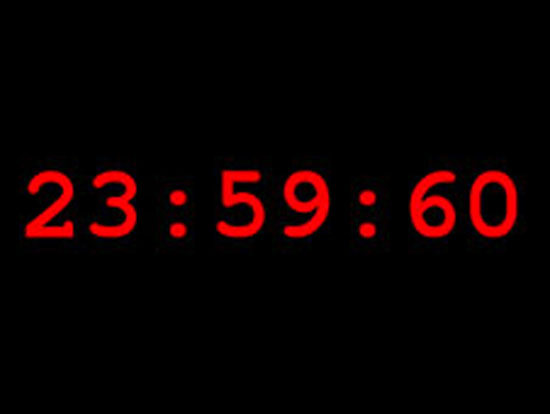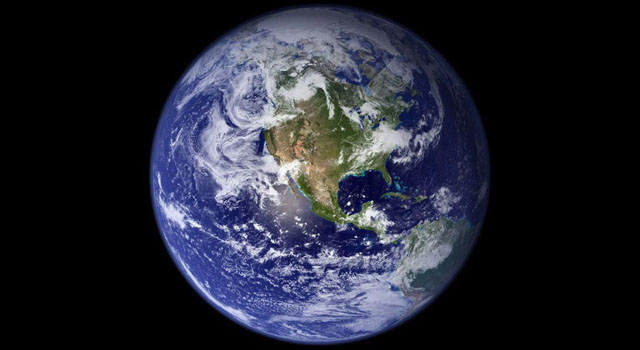Leap Second Science: NASA Explains Earth's Longer Day Today

Today will be one second longer than usual, and we have the moon to thank for the extra time.
A "leap second" will be added to the world's official clocks this evening (June 30), to account for the fact that Earth's rotation is slowing ever so slightly — meaning our days are getting longer, at the rate of about 1.4 milliseconds every 100 years.
"At the time of the dinosaurs, Earth completed one rotation in about 23 hours," Daniel MacMillan, of NASA’s Goddard Space Flight Center in Greenbelt, Md., said in a statement. "In the year 1820, a rotation took exactly 24 hours, or 86,400 standard seconds. Since 1820, the mean solar day has increased by about 2.5 milliseconds."
It's happening because of tidal forces between the Earth and moon. This mutual gravitational jostling results in the transfer of our planet's rotational momentum to the moon, pushing it away from us at about 1.6 inches (4 centimeters) per year.

Earth's rotational slowdown won't stop until it becomes tidally locked to the moon, researchers say — meaning we will always show the same face to our celestial neighbor. The moon is tidally locked to Earth now, keeping its far side forever out of sight. [Hit Snooze: 10 Best Alarm Clocks]
Scientists figured out the planet's lagging rotation rate using a technique called Very Long Baseline Interferometry. VLBI measures how long it takes radio waves emitted by faraway active black holes called quasars — the brightest objects in the universe — to reach a network of telescopes set up around the world.
From the tiny differences in arrival times to these various instruments, researchers can calculate Earth's rotational speed and a number of other interesting characteristics about our planet and its path through space.
Breaking space news, the latest updates on rocket launches, skywatching events and more!

Decades ago, scientists realized that some measurements and technologies required more precise timekeeping than Earth's rotation could provide. So in 1967, they officially changed the definition of a second, basing it on measurements of electromagnetic transitions in cesium atoms rather than the length of a day.
Such "atomic clocks" are accurate to approximately one second in 200 million years, researchers say. The widely used time standard based on the cesium atom is called Coordinated Universal Time, or UTC.
Timekeepers add leap seconds to UTC every once in a while to square it up with another time standard that's based on Earth's day length. So June 30 will get an extra second just before 8 p.m. EDT (midnight GMT on July 1).
The master clock at the U.S. Naval Observatory will move to 7:59:60 p.m. EDT, or 23:59:60 UTC, before ticking over. In practice, this means that clocks in many systems will be turned off for one second, NASA researchers said.
Saturday's adjustment will mark the 25th time a leap second has been added since the practice was initiated in 1972. The most recent leap second was inserted on New Year's Eve of 2008.
Follow SPACE.com on Twitter @Spacedotcom. We're also on Facebook and Google+.
Join our Space Forums to keep talking space on the latest missions, night sky and more! And if you have a news tip, correction or comment, let us know at: community@space.com.

Space.com is the premier source of space exploration, innovation and astronomy news, chronicling (and celebrating) humanity's ongoing expansion across the final frontier. Originally founded in 1999, Space.com is, and always has been, the passion of writers and editors who are space fans and also trained journalists. Our current news team consists of Editor-in-Chief Tariq Malik; Editor Hanneke Weitering, Senior Space Writer Mike Wall; Senior Writer Meghan Bartels; Senior Writer Chelsea Gohd, Senior Writer Tereza Pultarova and Staff Writer Alexander Cox, focusing on e-commerce. Senior Producer Steve Spaleta oversees our space videos, with Diana Whitcroft as our Social Media Editor.
